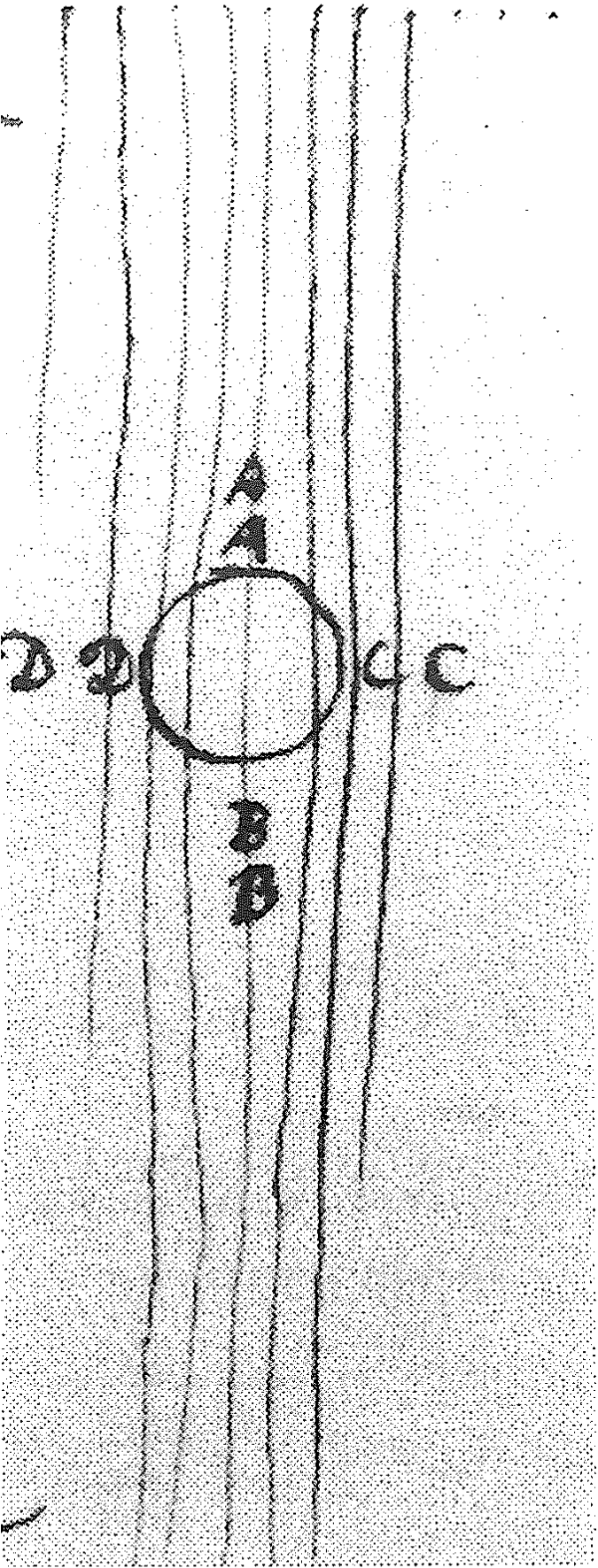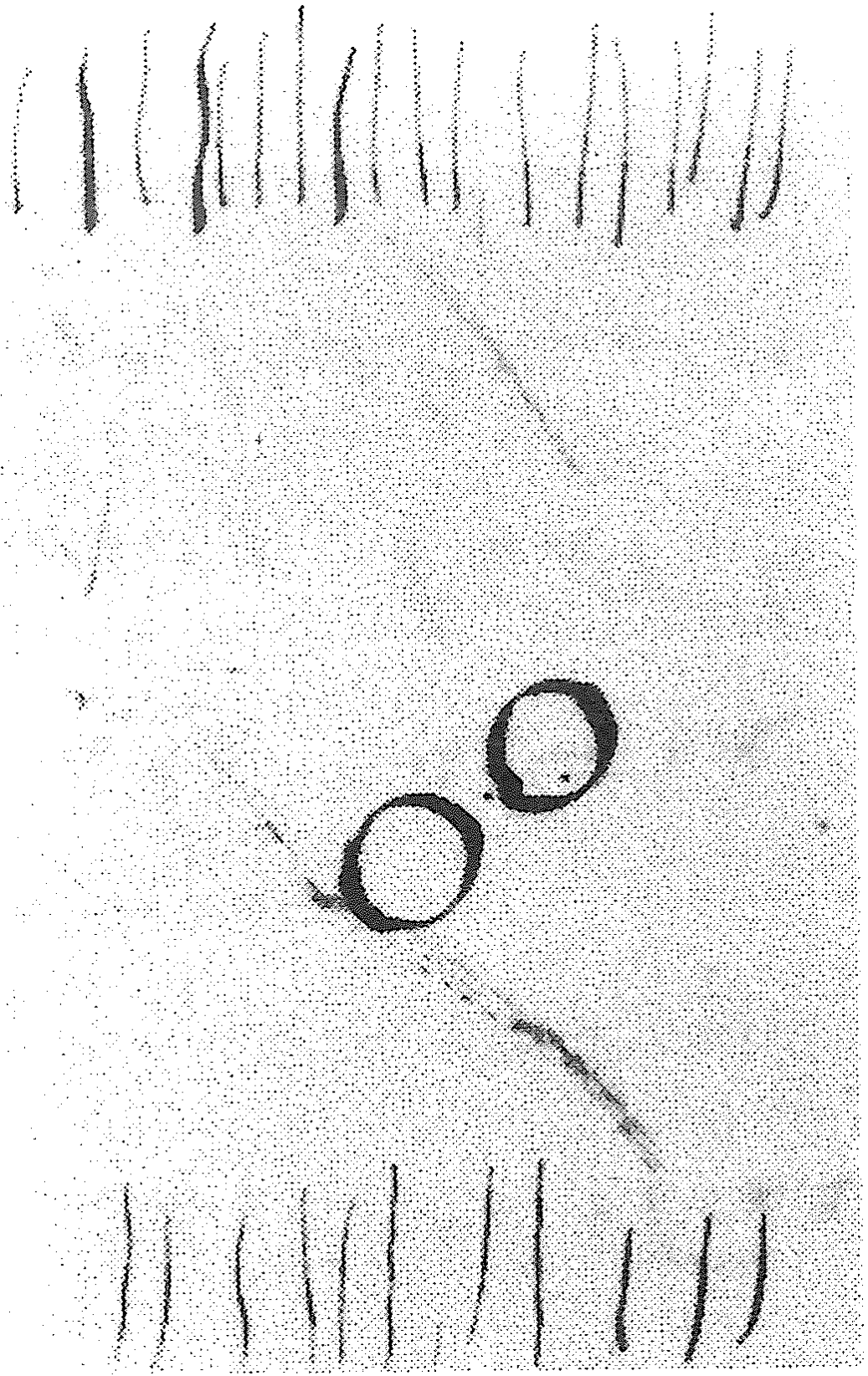William Thomson to Faraday 19 June 18521
32 Duke Street, St. James’ | Saturday June 19.
My dear Sir
After our conversation today I have been thinking again on the subject of a bar of diamagnetic non-crystalline substance, in a field of magnetic force which is naturally uniform, and I believe I can now show that your views lead to the conclusion I had arrived at otherwise, that such a bar, capable of turning round an axis, would be set stably with its length along the lines of force. As I may not have another opportunity of seeing you again before you leave town2, I hope you will excuse my continuing our conversation by writing a few lines on the subject.

Let the diagram represent a field of force naturally uniform, but influenced by the presence of a ball of diamagnetic substance. It is clear that in the localities A and B the lines of force will be less densely arranged, and in the localities D and C they will be more densely arranged than in the undisturbed field. Hence a second ball placed at A or at B would meet & disturb fewer lines than if the first ball were removed; but a second ball placed at D or C would meet and disturb more lines of force than if the first ball were removed. It follows that two equal balls of diamagnetic substance would produce more disturbance on the lines of force of the field if the line joining their centres is perpendicular to the lines of force than if it is parallel to them. But the disturbance produced by a diamagnetic substance is an effect of worse “conducting power”, and the less of such an effect the better.

Hence two balls of diamagnetic substance, fixed to one another by an unmagnetic framework, would, if placed obliquely and allowed to turn freely round an axis, set with the line joining their centres, along the lines of force.
The same argument, for a contrary reason, shows that two balls of soft iron similarly arranged, would set with the line joining their centres, also along the lines of force. For in this position more disturbance is produced on the lines of force of the field than in any other. But now, the more disturbance (being of better “conduction”) the better. Hence the conclusion. Of course similar conclusions follow for bars, or elongated masses, of the substances.
I can never however make my assertion regarding the tendency of a diamagnetic bar in a uniform field without repeating that I believe no experiments can make it sensible. I doubt even whether the corresponding tendency in the case of a neutral bar in as strong a solution of sulphate of iron as could be got, could be rendered sensible by actual experiments, as excessively slight deviations from uniformity in the field would entirely mask the results of this tendency even if by themselves they might produce appreciable effects.
I remain, My dear Sir, | Your’s very truly | William Thomson
M. Faraday Esq
Bibliography
GOODING, David (1982): “A Convergence of Opinion on the Divergence of Lines: Faraday and Thomson's Discussion of Diamagnetism”, Notes Rec. Roy. Soc. Lond., 36: 243-59.
Please cite as “Faraday2546,” in Ɛpsilon: The Michael Faraday Collection accessed on